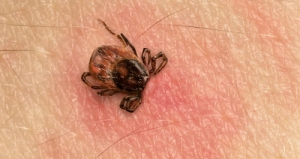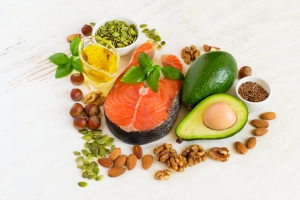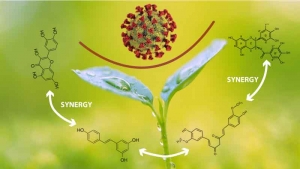In the last issue of the Health Science News Page, we discussed insect-borne diseases with a specific focus on Lyme disease. Lyme disease was first widely recognized in 1975 in Old Lyme, Connecticut, USA. It is a bacterial infection caused by a type of bacteria called Borrelia. It is transmitted to humans through the bite of a tick that feeds on other small animals, pets, deer, mice, birds, and squirrels carrying the bacteria.
Lyme disease starts with vague flu-like symptoms such as skin rashes, fever, muscle aches, and fatigue. Due to a lack of specific and reliable laboratory tests, the treatment is often delayed and the disease goes on untreated for a long time. In more advanced or chronic Lyme disease stages, people develop chronic arthritis, inflammation of the heart and other organs, neuropathies, sleep disturbances, cognitive impairment and other neurological symptoms including changes in some of the markers of autoimmune diseases. Oral and intravenous antibiotics are usually applied but their efficacy decreases when given in the later stage of infection. Moreover, many of the antibiotics are not effective due to wide-spread bacterial resistance.
As summer approaches and people start outdoor activities, the season also brings an increased exposure to insects and insect-borne diseases. According to the Centers for Disease Control and Prevention, insect-borne diseases in the US increased more than three times in the last decade. Ticks, mosquitoes, and fleas are the most common carriers of these diseases and they especially increase during longer and hotter summer days.
Lyme disease is one of the most common tick-borne diseases accounting for 3 in 5 cases of insect-borne diseases. It is found in more than 80 countries. In the US it is mainly found in the northeast, midwest and along the Pacific coast. Approximately 476,000 new cases of Lyme disease are diagnosed in the US every year, and close to two million people could be suffering from chronic Lyme disease.
COVID-19 is not the only pandemic threatening the world right now. Metabolic syndrome (a combination of obesity, high blood pressure, and high blood sugar) which has been rising for decades before COVID-19 deteriorates overall health making people prone to other acute and chronic diseases. According to the CDC, close to 50% of the adult population in the US already has high blood pressure and only 1 in 4 of them have it under control. Appropriately named as the “silent killer,” consistent high blood pressure damages multiple organ systems in the body. In addition to the increased risk of a fatal heart attack and stroke, hypertension is a cause of other debilitating conditions such as heart failure, kidney damage, and various eye problems including blindness. While there are a large number of antihypertensive medications, some of the most common ones are thiazide diuretics, calcium channel blockers, beta-blockers, and ACE inhibitors. Most of these drugs are useful only for the temporary reduction of hypertension and are associated with a wide array of side effects. A very recent clinical trial conducted on more than 300,000 adults revealed that prolonged use of thiazides, including hydrochlorothiazide, was associated with a significantly increased risk of skin cancer.1
While there is a consensus that omega-3 and omega-6 fatty acids are “essential” for healthy body functions, there is a lot of confusing information surrounding their consumption from fish, fish oil supplements, and plant sources. Most people are concerned about the risk of environmental pollutants and heavy metals present in fish. However, they quite often miss the fact that the types of omega-3 fatty acids in fish versus the plant sources are not the same.
Plants are the rich source of many nutrients that protect them from diseases, heat, radiation, poisons, and pollutants. These phytonutrients also have numerous health benefits for humans as they provide antioxidant protection to our body’s cells, fight inflammation, and can boost immune system function. In the developed countries, active plant components have been known to be effective against leading health problems, such as cancer, cardiovascular disease, diabetes, and high blood pressure. Recently, during the COVID-19 pandemic, the phytonutrients such as green tea extract, quercetin (present in red onions), resveratrol (present in red grapes), and curcumin (turmeric root extract) have gained renewed interest in their antiviral benefits. However, despite promoting the consumption of 8-10 daily servings of fruits and vegetables, less than 4% of Americans meet these recommendations. Did you have your veggies today?
Here we outline the health benefits of key phytobiological components:
Quercetin is proven to benefit against RNA viruses (coronavirus, flu) and DNA viruses (herpes). It helps in thwarting viral multiplication by killing the live viruses within the cells. It can also protect infected cells from damage caused by the pathogen and aid in the cell repair process.
Curcumin from turmeric root extract is a very potent antiviral and anti-inflammatory agent. It inactivates viruses at multiple steps of infection. First, it can inhibit viral attachment to the cell thus blocking the viral entry. It also prevents viruses from becoming active by blocking production of viral proteins and inhibits the multiplication of viruses and their release from the cells. This stops the spread of infection. Curcumin also protects against widespread inflammation caused by a viral infection. We learned that the so-called “cytokine storm” caused by extensive inflammation is one of the main causes of serious complications in COVID-19. Curcumin has shown benefits against influenza and other types of viruses including dengue, herpes, hepatitis (HBV), papillomavirus (HPV), and leukemia (HTLV). Unlike to antiviral drugs, the viruses have not shown resistance to curcumin.
Green tea extract is known to reduce influenza infections in healthcare workers despite their exposure. In November 2020 there are expected results coming from a large clinical trial testing whether green tea extract also protects the healthcare workers against COVID-19. At the cellular level, green tea extract demonstrated benefits against the coronavirus by inhibiting a key enzyme involved in its multiplication. Similar to curcumin, green tea extract showed antiviral action against influenza A and B viruses, HIV, hepatitis C and Zika viruses. Green tea extract can weaken the coronavirus by inhibiting its outer proteins and can also prevent its attachment to the cells.
Resveratrol and cruciferous vegetable extracts. Resveratrol from grape seeds has been known for its heart-protective effects. However, resveratrol also has antiviral properties and is effective in reducing viral multiplication and inflammation caused by viral infection. The antiviral efficacy of resveratrol includes against viruses such as influenza A and B, SARS-CoV, and rhinovirus (which causes the common cold). Resveratrol and the cruciferous vegetable extracts support the body’s immune system thus contributing to their protective benefits.
Cooperation of nutrients for enhanced benefits. Our body does not rely on one micronutrient to protect itself against microbial invaders. In addition to active plant components, it requires many vitamins and minerals to mount effective protection. Research conducted at the Dr. Rath Research Institute has documented how various nutrient combinations can enhance healthy cellular functions. In our recent studies we tested how micronutrients can impair the coronavirus in entering the cells in our body 1, 2. We showed, among others, that a specific combination of phytonutrients can inhibit binding of a viral protein to the cell receptors by 97% and can also inhibit the expression of these receptors on the cells by 92%, thereby reducing the potential sites for virus attachments.
Considering the impact of the current pandemic on public health and the economy and a lack of effective treatment options, safe natural compounds with scientifically proven efficacy should become part of a public health strategy and implemented without delay.
Ref:
1. Ivanov V, et al., J CM & NH, July 200
2. Goc A, et al., J CM & NH, Aug 2020




